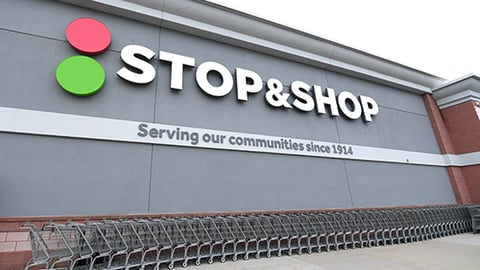Walmart Shows the Way on IoT in Food Retail
Get ready to hear a lot more about how Internet of Things (IoT) can improve food retail — especially now that Walmart is working harder to promote its use of the technology.
“Internet of Things,” of course, refers to how physical objects are connected via software, sensors and the internet, with the goal of providing more precise detection, communication, analysis and action — all of which can help businesses run more efficiently, at least in theory.
In a recent blog, Sanjay Radhakrishnan, Walmart’s vice president, global tech, described how the retailer is using IoT technology for a variety of tasks — including keeping ice cream frozen and milk cold.
“As part of our digital transformation, we’re using Internet of Things (IoT) at a scale unmatched across retail to improve food quality, lower energy consumption and keep costs low for our customers,” Radhakrishnan wrote. “Currently, Walmart manages more than 7 million unique IoT data points across our U.S. stores. Every day, this network of connected devices sends almost 1.5 billion messages regarding temperature, operating functions and energy use.”
The push toward more IoT capability required Walmart to build proprietary software with complex algorithms able to detect abnormal events in real time. All that work can help pay off when it comes to the quality of grocery items.
“Our customers depend on our stores to maintain food at the proper temperature, like keeping ice cream frozen and milk cold,” Radhakrishnan said. “Global Tech is helping our Real Estate team to ensure proper food quality through monitoring our refrigeration units with IoT systems. Our IoT application not only monitors the temperature of the individual unit to ensure proper food safety standards, but also looks at how the equipment is performing and takes proactive steps towards maintenance repairs to reduce the cost and down time caused by equipment failure.”
More specifically, this is how the IoT quality control process works, according to Radhakrishnan:
“If the signal received requires additional information, it is sent to the maintenance team through a cloud application where the team will triage the issue and determine the best course of action. That could include leveraging a store associate to take additional steps, repairing an IT connection issue, submitting a work order and getting a technician on-site to look at the unit or by making changes remotely to the equipment.”
The use of IoT technology also allows for better management of energy — an important issue not only when it comes to overall costs but as retailers tout their efforts toward sustainability.
“We’re able to use IoT sensors on our stores’ HVAC and energy systems to remotely monitor and respond to community energy consumption needs quickly and with minimal impact to our customers’ shopping experience,” Radhakrishnan said. “Through the use of a solution called Demand Response we can reduce energy consumption to any of our U.S. stores for a set amount of time and then have systems in place to automatically return our equipment back to the normal operating standards. What this means is that we can lower energy use anywhere in the U.S. by region or an individual store.”
Expect increasing use of IoT technology in food retail, and not only from Walmart. According to home and kitchen appliance technology company Bosch, for instance, other main use cases for IoT in food retail include automatic notification from reverse vending machines and parking lot monitoring.
“A full parking lot is an indication that there are more customers in the store,” Bosch said. “In this use case, the Bosch IoT Suite can send a notification to the store manager or the information desk so additional cashiers can be opened to reduce waiting time and improve customer satisfaction.”
Bentonville, Ark.-based Walmart operates more than 11,300 stores under 56 banners in 27 countries, and e-commerce websites, employing 2.2 million-plus associates worldwide. Walmart U.S. is No. 1 on The PG 100, Progressive Grocer's list of the top food and consumables retailers in North America, while Walmart-owned Sam's Club ranks No. 9 on the list.





